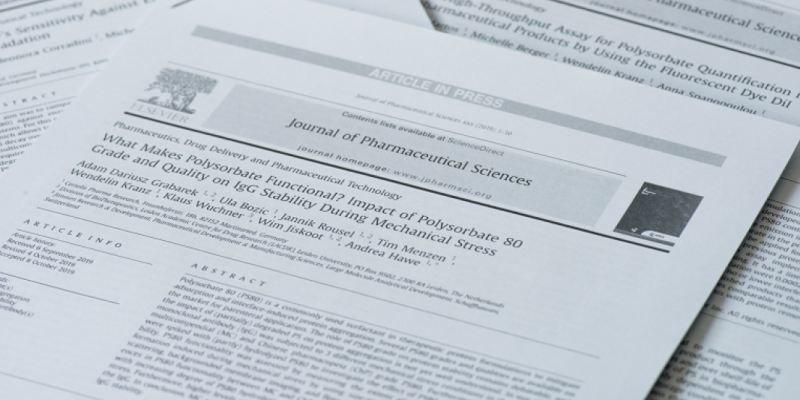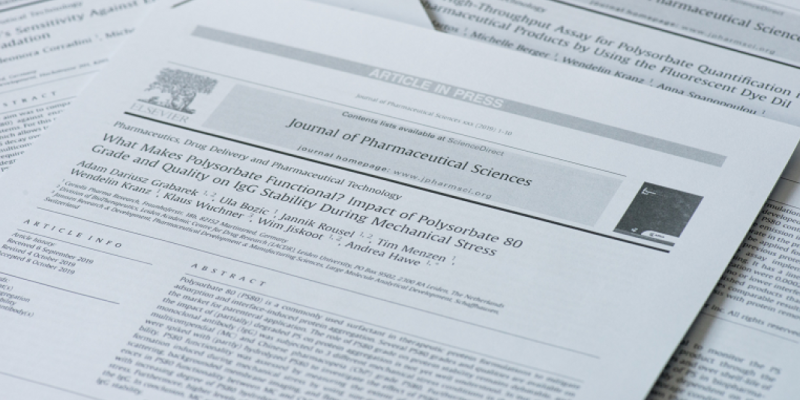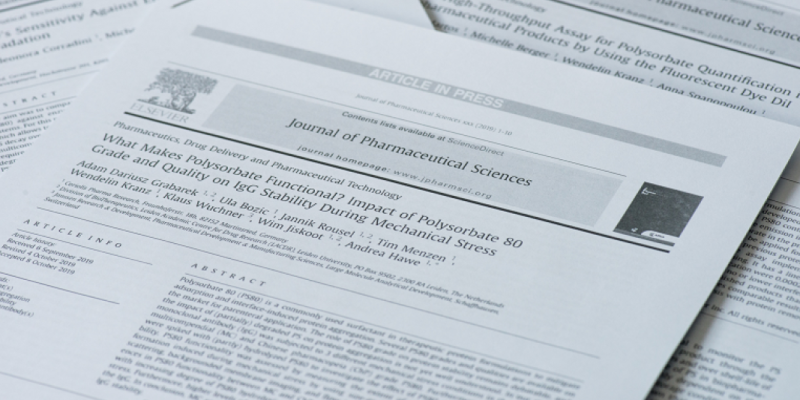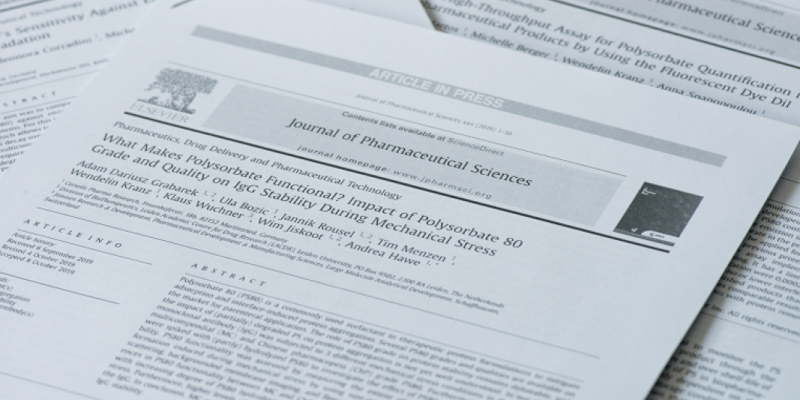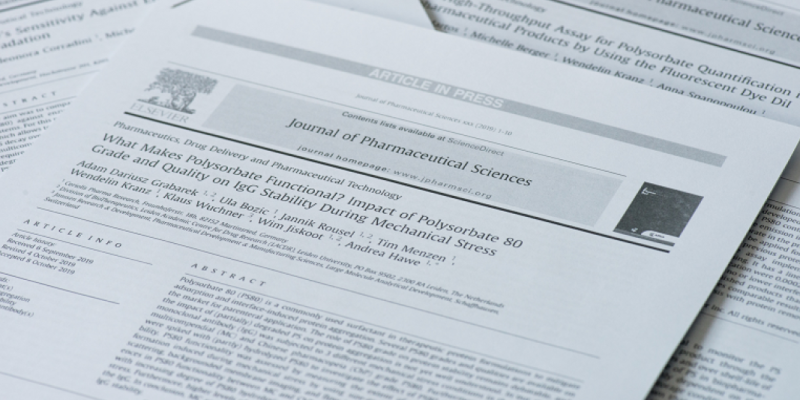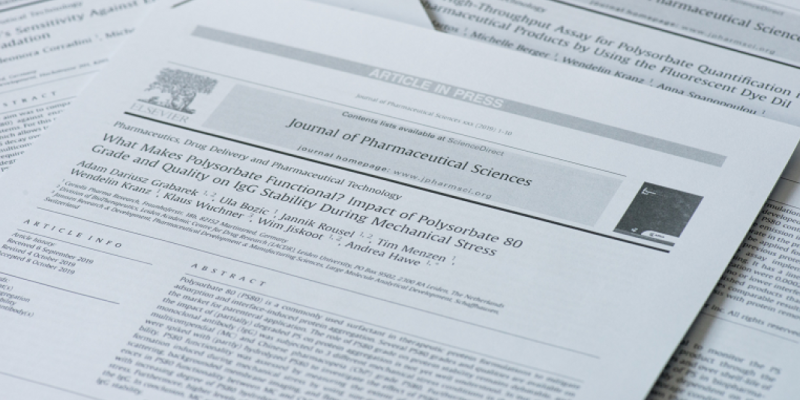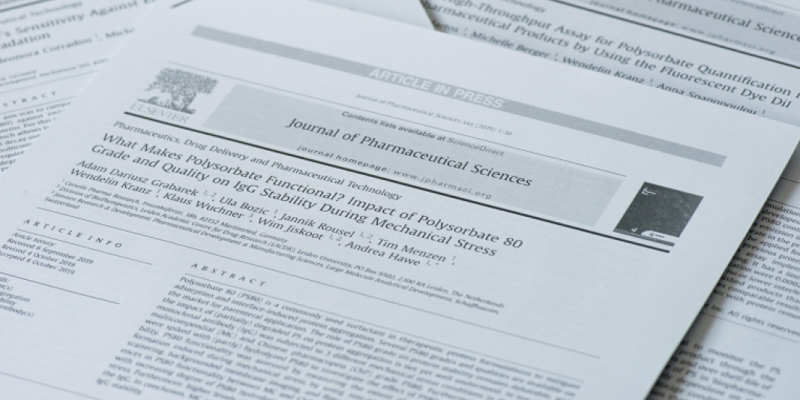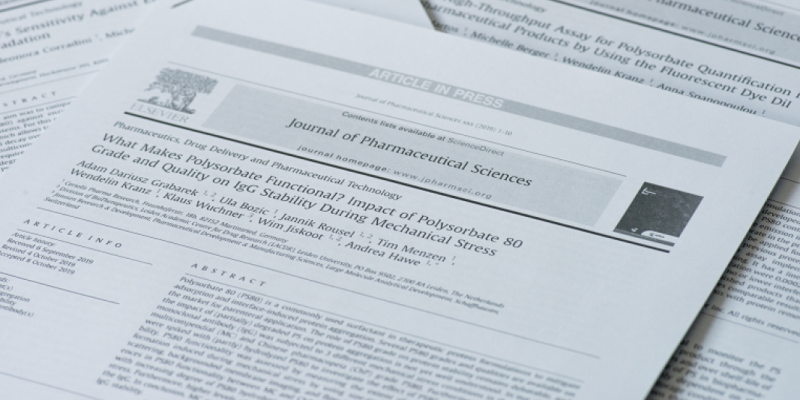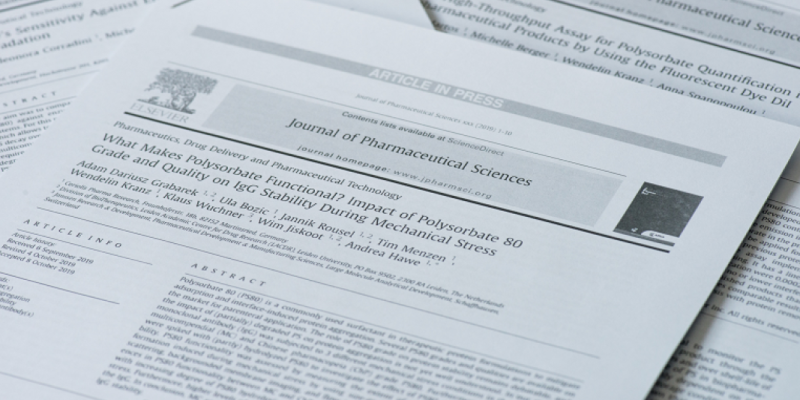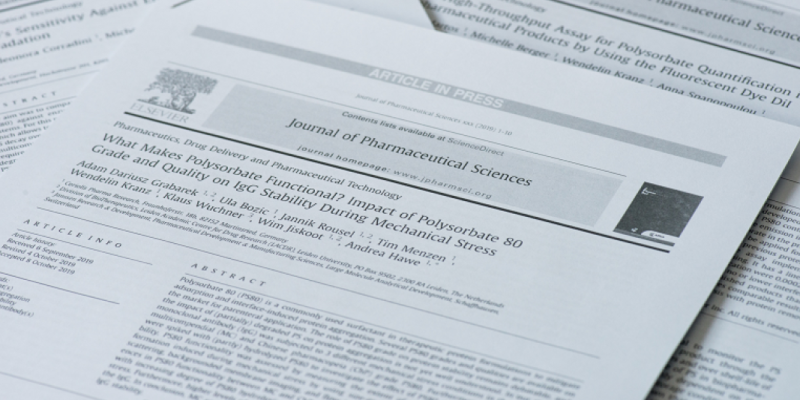Quantitative Laser Diffraction for Quantification of Protein Aggregates
J Pharm Sci. 2019 Jan
Quantitative Laser Diffraction for Quantification of Protein Aggregates: Comparison With Resonant Mass Measurement, Nanoparticle Tracking Analysis, Flow Imaging, and Light Obscuration
In the past, analysis of micron-sized (>1.0 μm) aggregates of therapeutic proteins has been limited to light obscuration (LO), and appropriate quantitative methods of evaluating protein aggregates need to be developed. Recently, novel methods with enhanced reliability and sensitivity, such as nanoparticle tracking analysis (NTA), resonant mass measurement (RMM), and flow imaging (FI), have emerged. We have found that quantitative laser diffraction (qLD) is also effective for quantitative evaluation of protein aggregates over a wide size range. However, the different detection principles of the methods potentially lead to inconsistencies in results. This study aimed to compare particle size distributions and concentrations of protein aggregates using the orthogonal methods. Protein aggregates were generated by stirring an immunoglobulin solution. Serial dilutions of the aggregates stock were analyzed by RMM, FI, and qLD to obtain the particle size distribution and concentration using each method. In addition, size distribution of a protein aggregates solution was compared by RMM, NTA, FI, LO, and qLD. Both particle size distribution and concentration were in good agreement between RMM and qLD (0.3-2 μm) and between FI and qLD (2-20 μm). Thus, we concluded that qLD enables covering of the overlapping particle size range between RMM and FI.
J Pharm Sci. 2019 Jan
https://jpharmsci.org/article/S0022-3549(18)30531-8/fulltext

